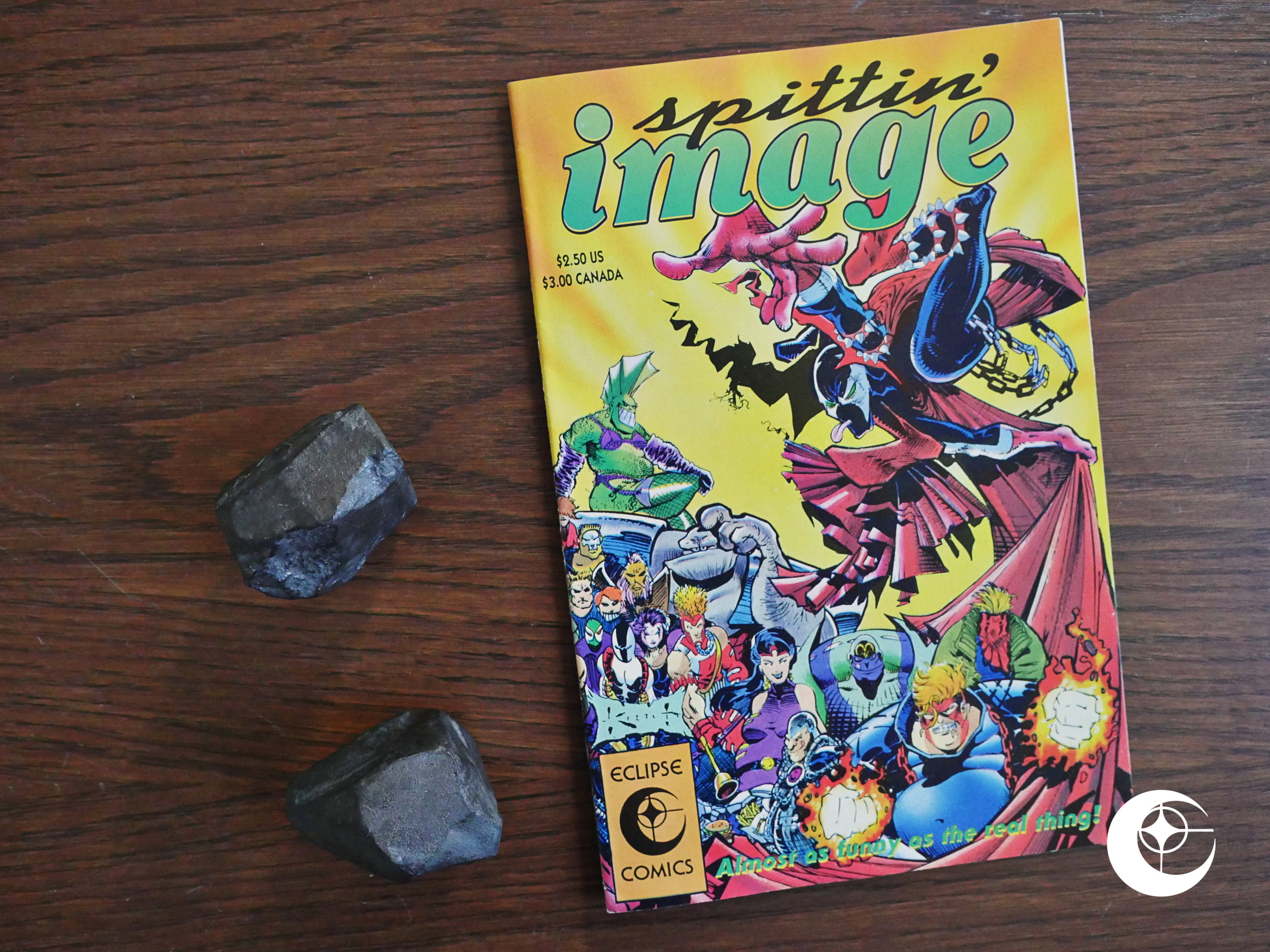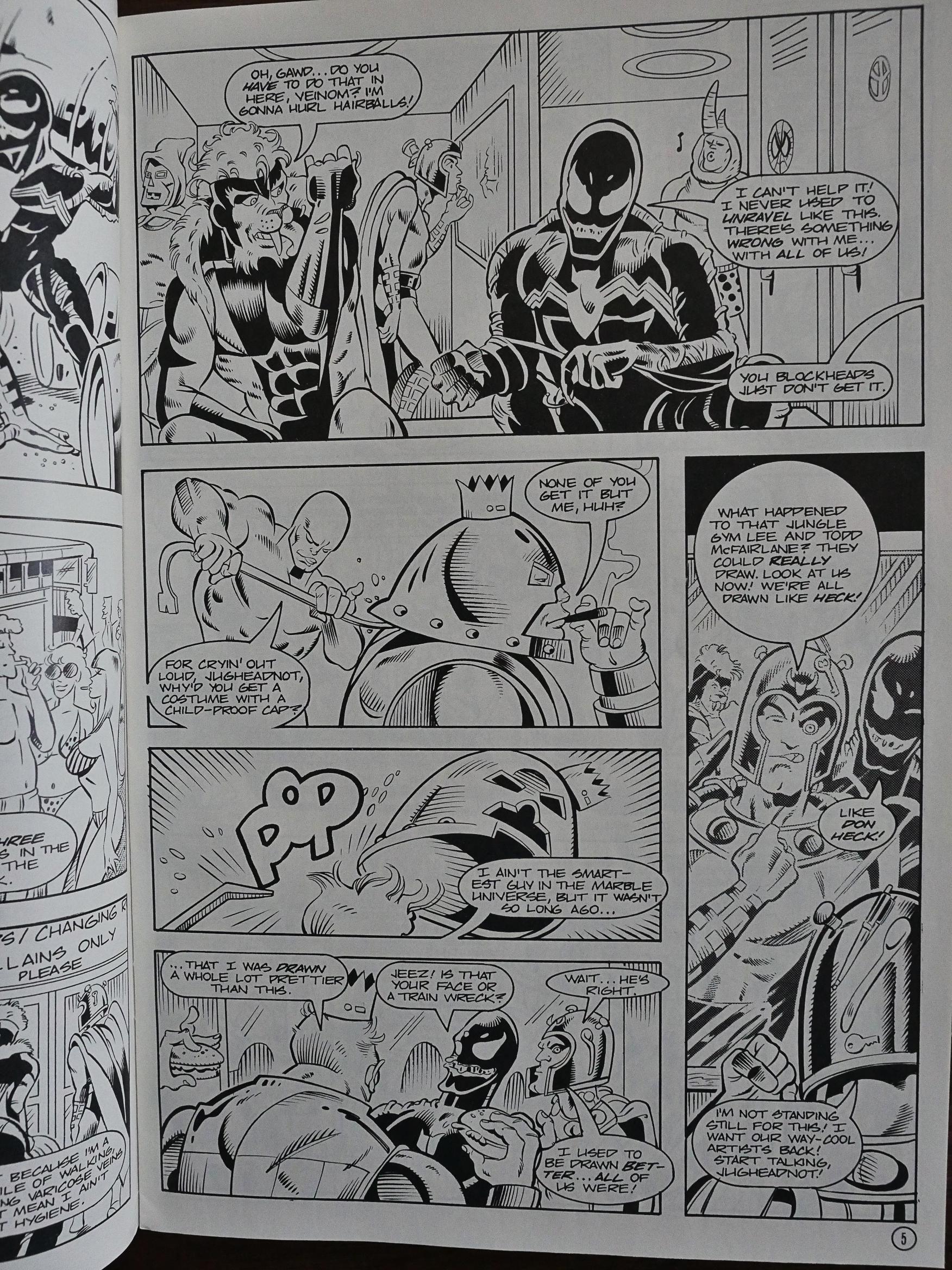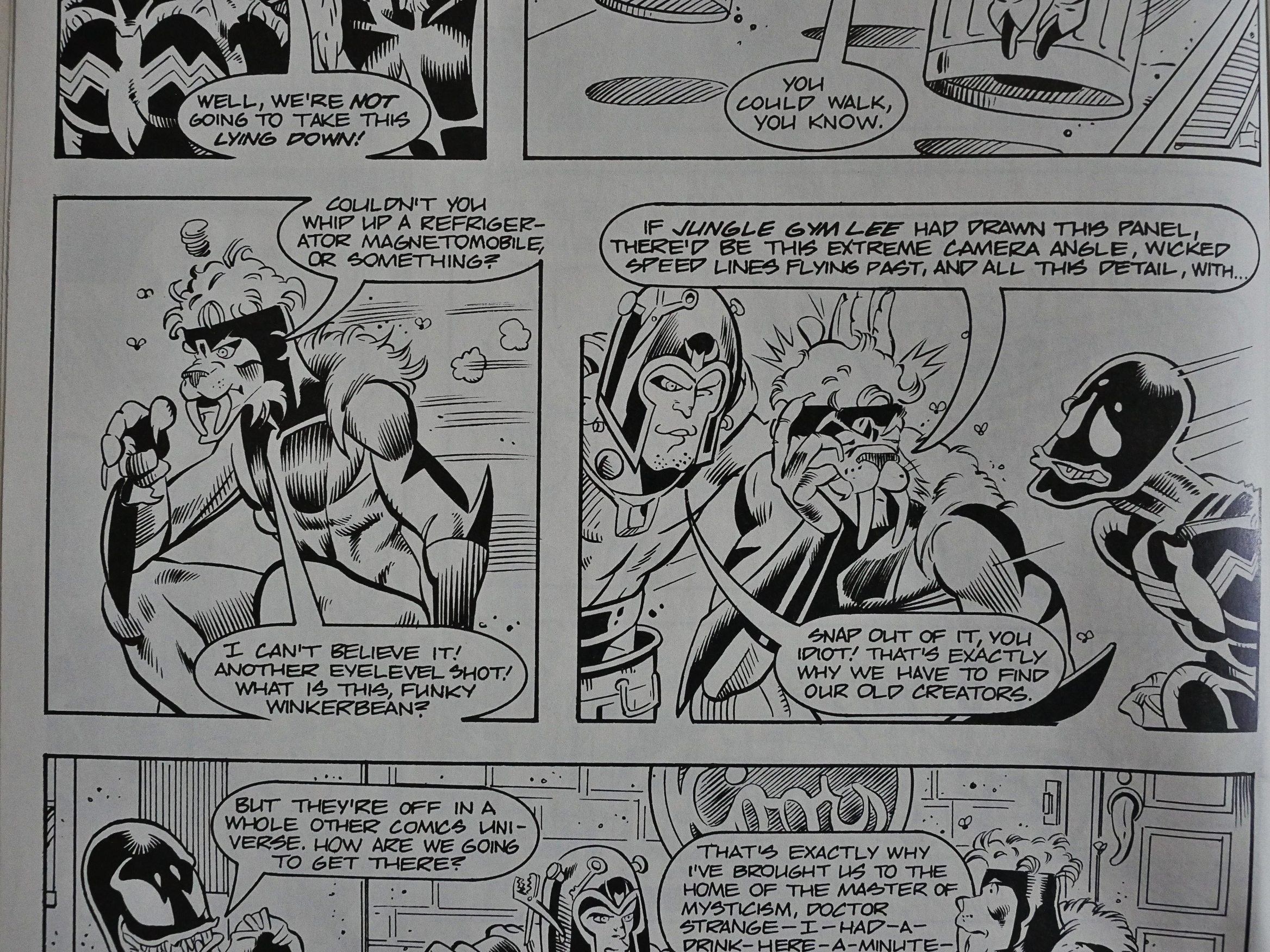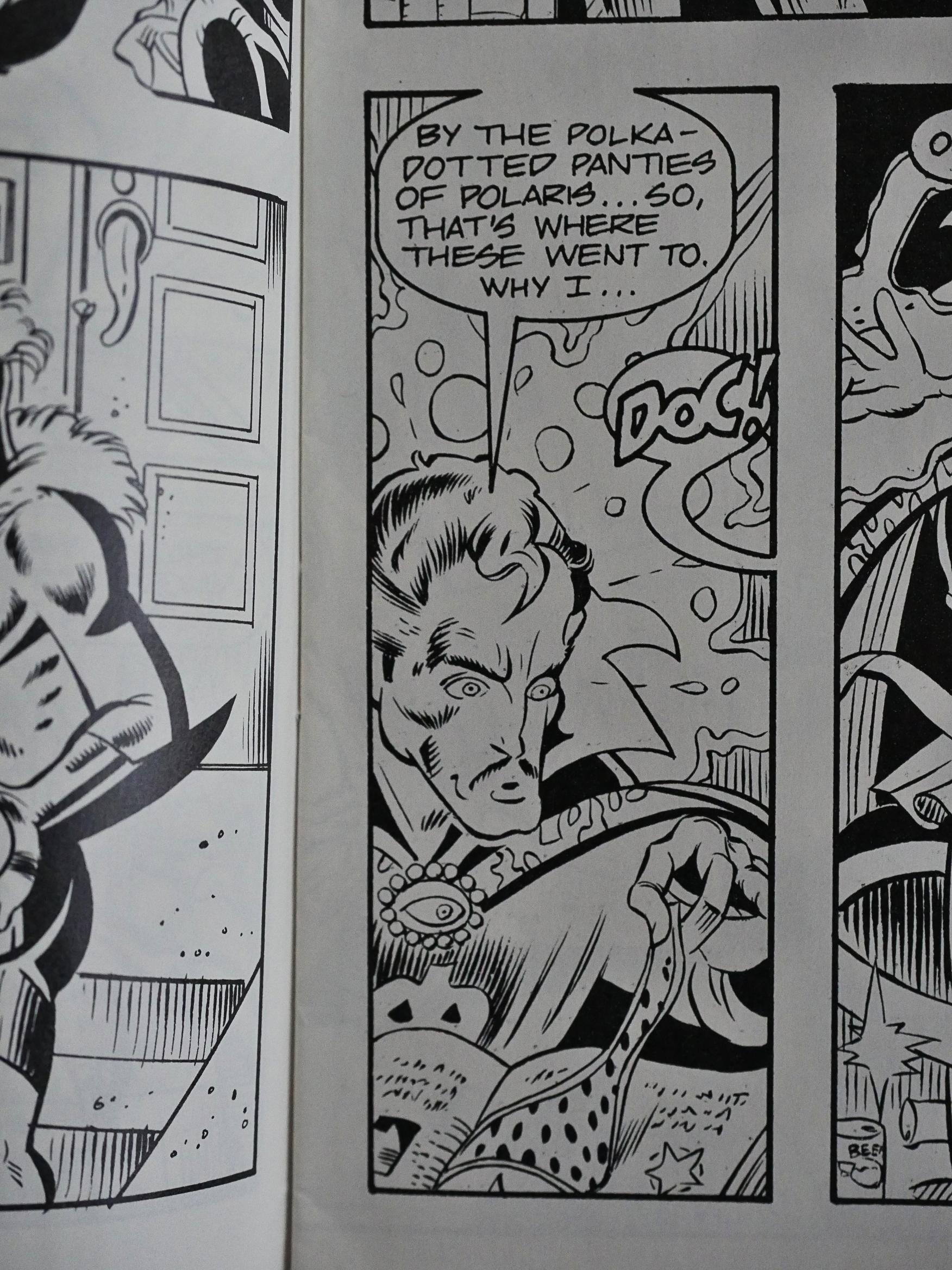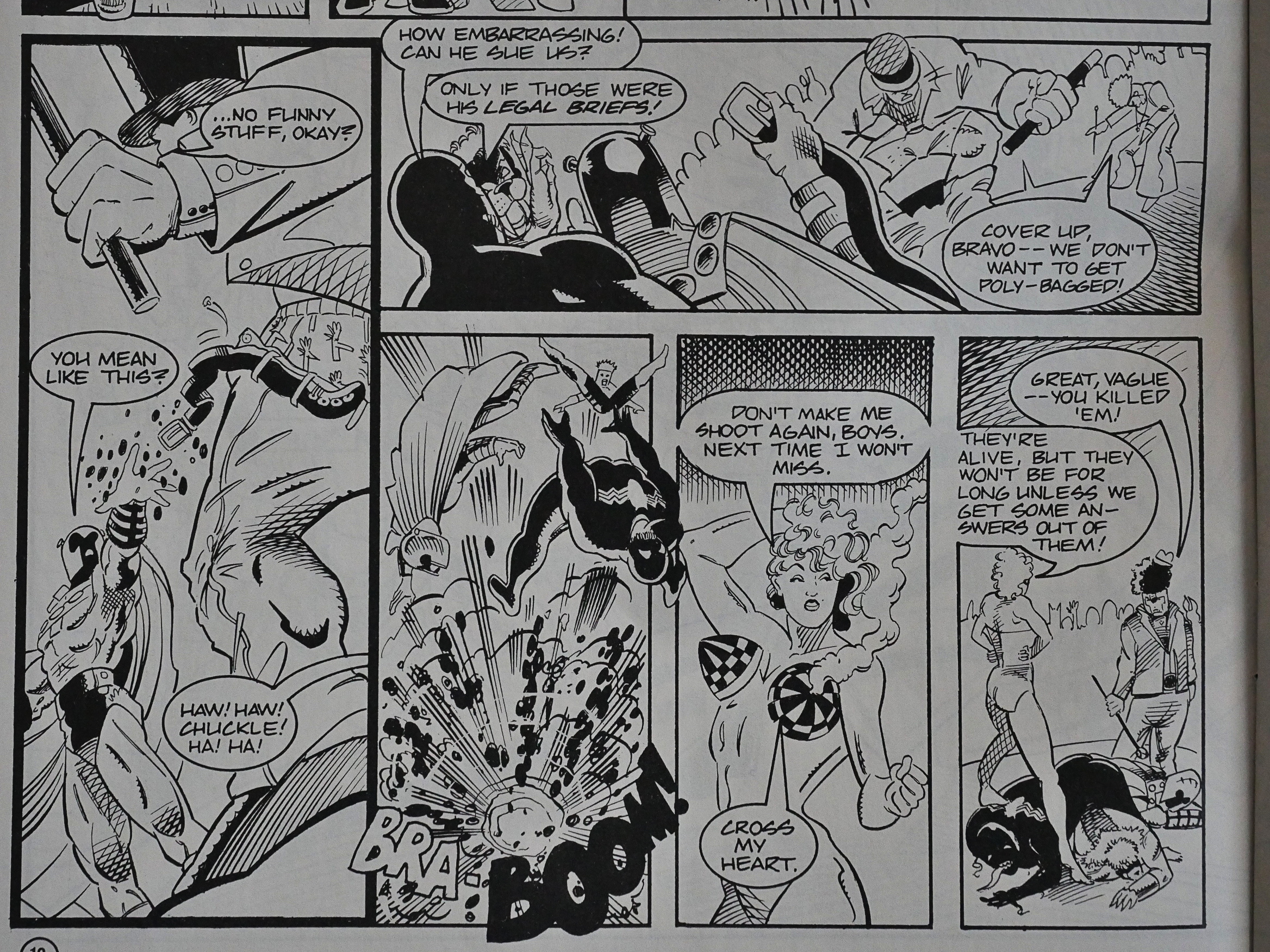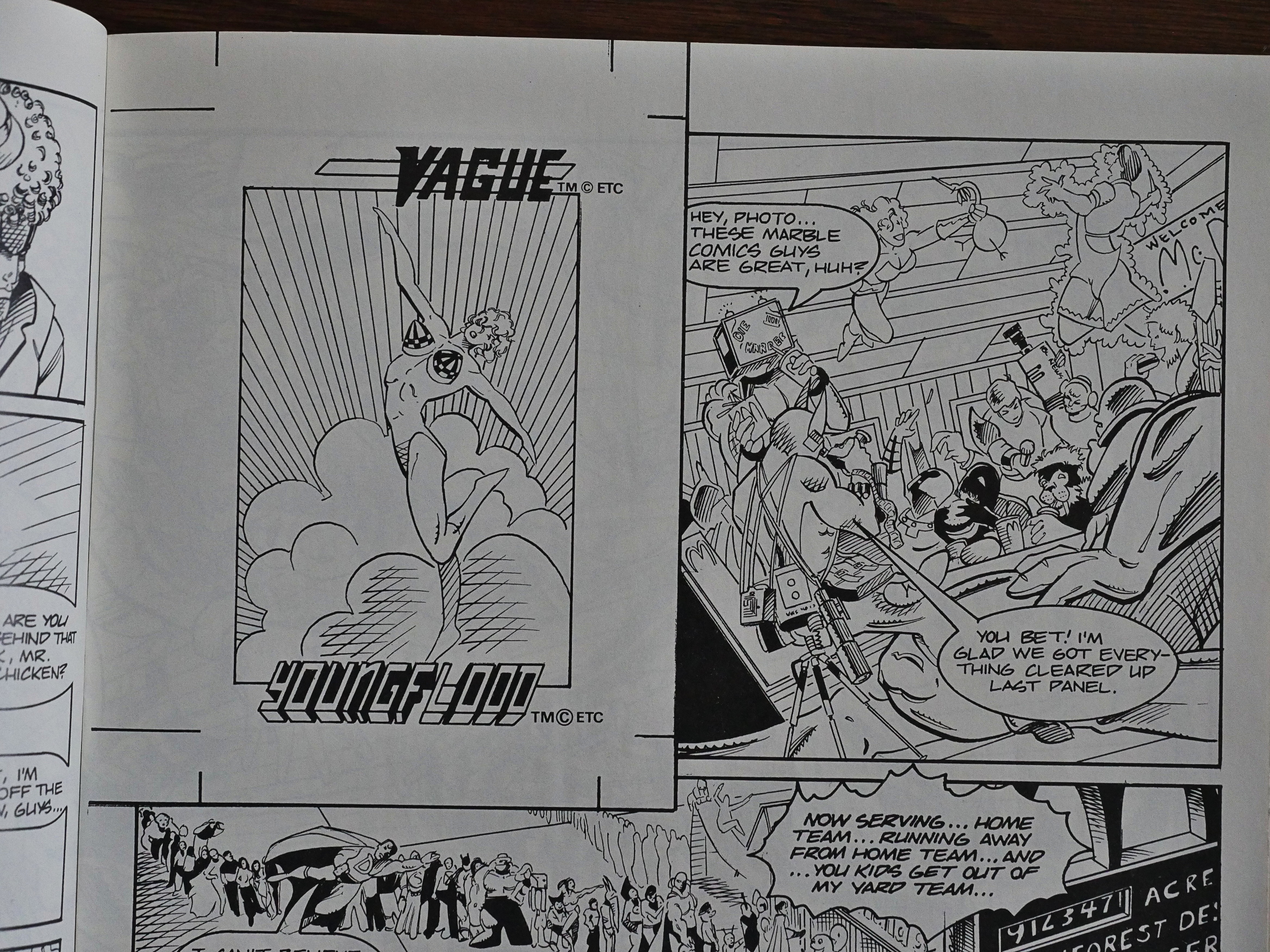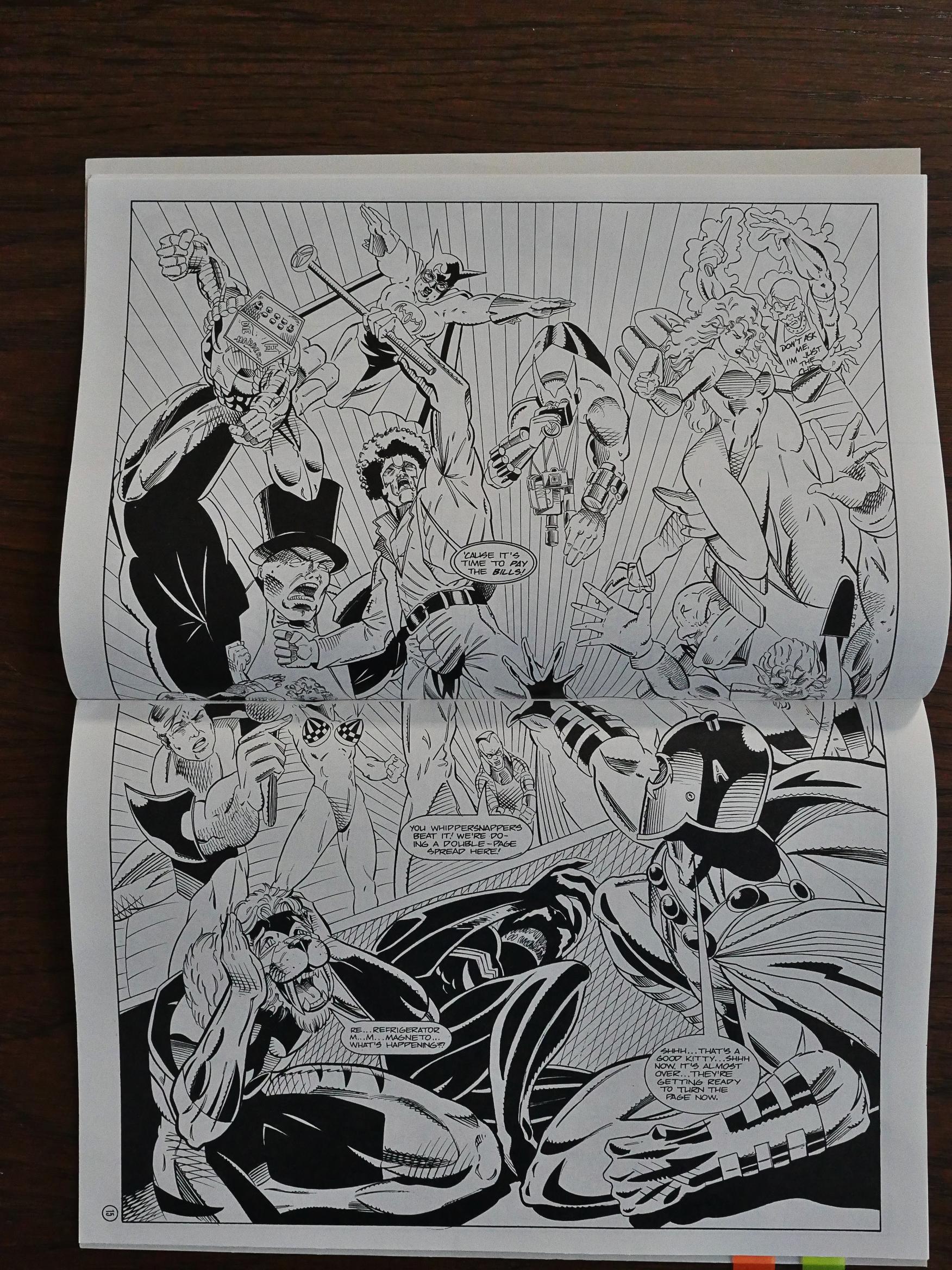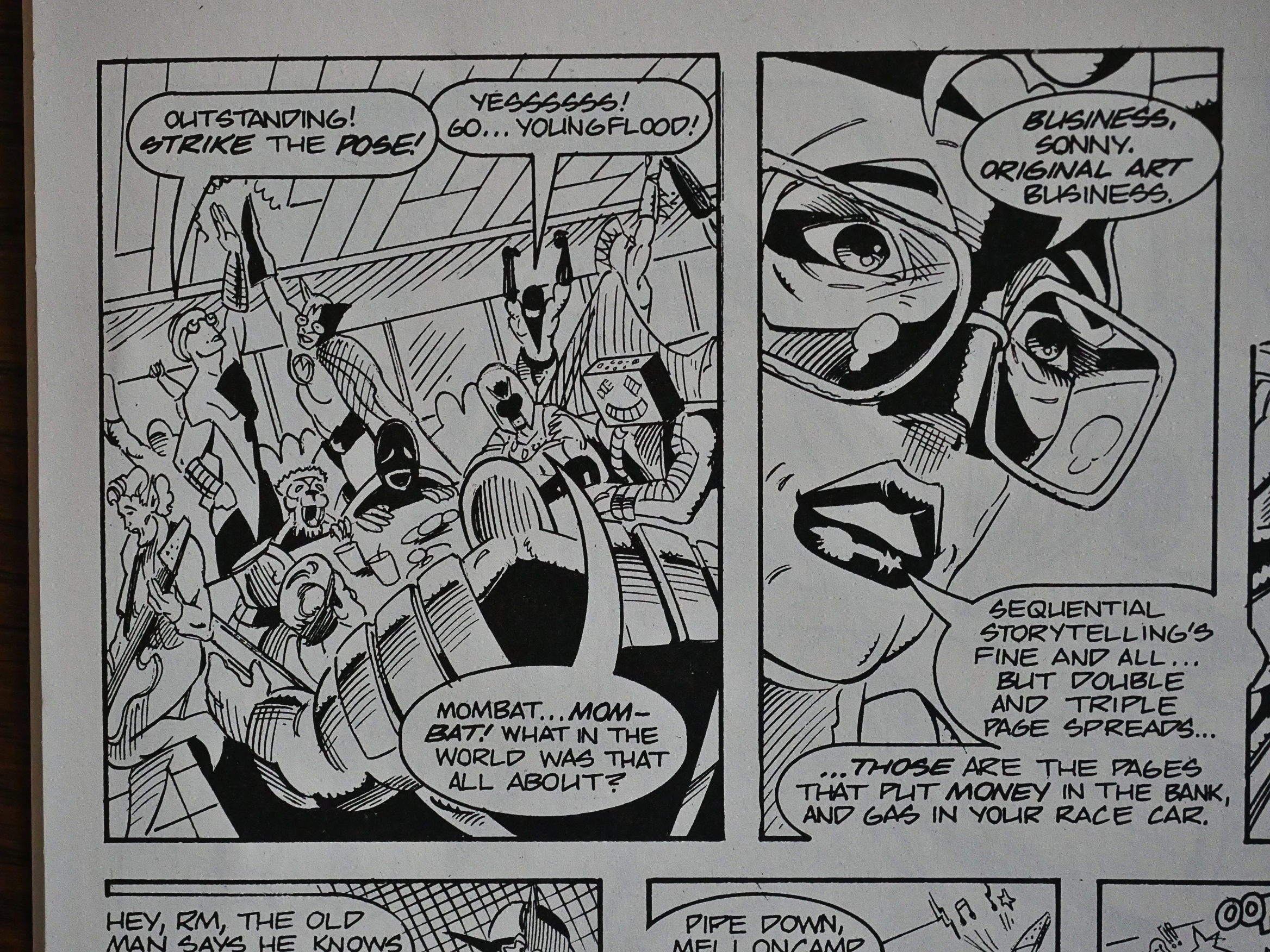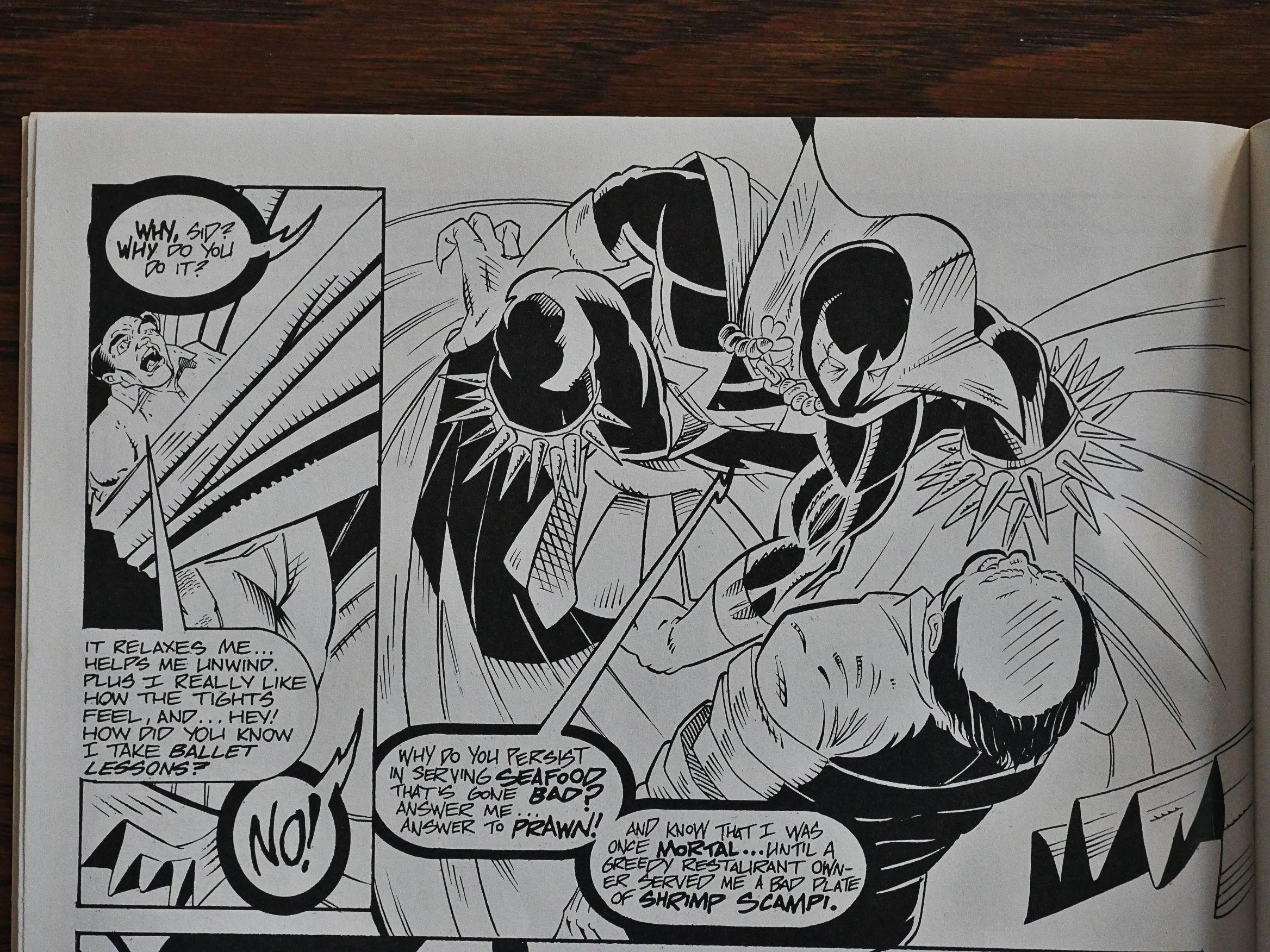Spittin’ Image (1992) #1 by Fred Schiller, Ben Herrera, David Williams, Tom Simonton, Terry Dodson, David Ammerman, Dan Schaeffer et al.
This is the fifth and final parody comic book Eclipse published in 1992, and it’s the third written by Fred Schiller. All of Schiller’s books turn out to be about the same thing: The comics business. Perhaps I should have done just one blog post about all three, but I didn’t know! Sorry!
So, once again we have comic book characters discussing things about their comic books. Here we have some Marvel Comics characters who’ve just realised that their artwork has gone to heck (Don Heck) after Marvel’s most popular artists had all left and gone to form Image Comics.
Schiller keeps the parody names (Jim Lee/Jungle Gym Lee) consistent over all his three comics, which is something, even if those aren’t particularly brilliant names…
I laughed out loud at that joke. Trey silly.
As you may have noticed from the top of this blog post, there’s a ton of artists credited, and this book uses that to its advantage. When we shift between comic book properties, they rotate in new artists who emulate (i.e., parody) the target in question.
I liked this dig at trading cards.
Suddenly! Double page spread!
It’s not a particularly original criticism of the Image style: All flashy spreads with little storytelling, but this is an amusing book.
Definitely the best of the bunch.
As usual with Eclipse comics from this era, finding anybody even aware of the books even existing is difficult, but I did find a review of sorts! Here’s the Google Translate version:
What surprises at first glance with Spittin ‘Image is, past the number of artists who worked on this comic, that the drawings are solid and pleasant (apart from the parody of Rob Liefeld’s style). The second surprise is that … it’s not especially funny! A height for a parody!
Admittedly, two or three smiles appear on the face of the reader at first, but the whole is rarely fly. No gags to bang your knees. While the plot has the merit of not going in all directions and keep a thread, with a nice catch, the author seems to lack perspective or imagination.
And that’s the end of 1992.

